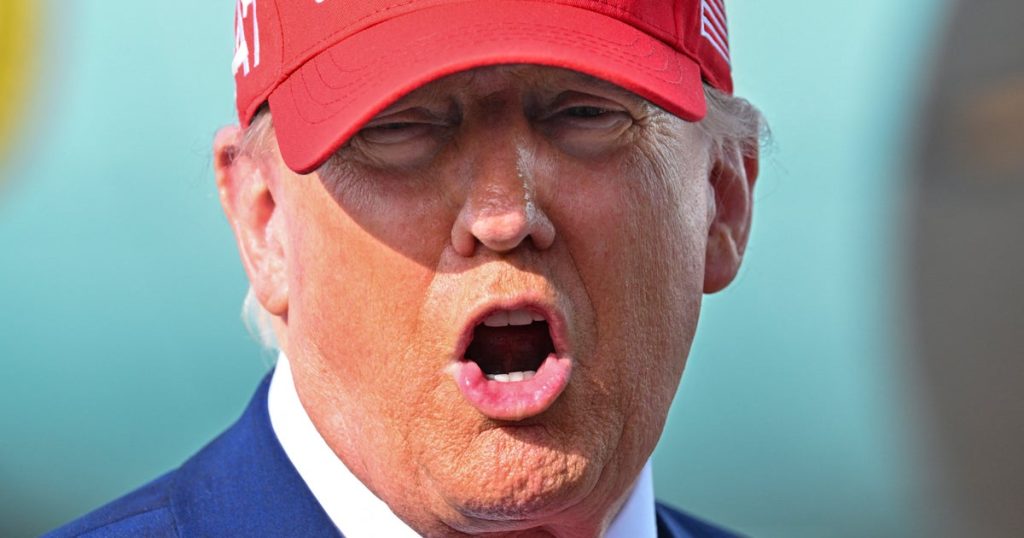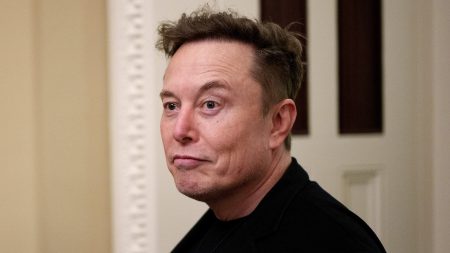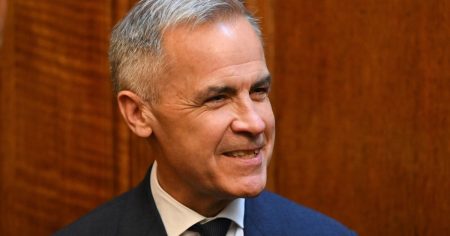The Great Egg Price Debate: How Trump’s Messaging on Inflation is Taking a Hit
President Donald Trump, the former commander-in-chief known for his bold campaign promises, has found himself in the spotlight again—this time over a surprisingly contentious issue: egg prices. While Donald Trump once vowed to slash grocery costs on his very first day in office, his recent stance on soaring egg prices seems far more defensive. Over the weekend, Trump shared a column titled, “Shut Up About Egg Prices — Trump Is Saving Consumers Millions,” written by conservative commentator Charlie Kirk. This brazen headline reflects a clear shift in Trump’s messaging, from promising price cuts to deflecting blame for the current economic realities.
The context? Egg prices have hit record highs, with a dozen eggs averaging nearly $5 in January, and climbing to over $10 in some regions. Grocery stores have imposed limits on egg purchases, and some have even run out entirely. Restaurants are adding egg surcharges to bills, further fueling frustration. All of this has made egg prices a hot-button issue, with critics and supporters alike weighing in. For Trump, who campaigned heavily on cutting prices “starting on Day 1,” the issue is particularly fraught.
The Finger-Pointing Begins: Trump, Eggs, and the Bird Flu
Charlie Kirk’s article, published in The Daily Caller, takes a predictable stance: egg prices aren’t Trump’s fault. He’s right—up to a point. While Trump’s policies can’t be entirely blamed for the surge in egg costs, his administration’s decisions arguably haven’t helped. The primary culprit? A severe outbreak of bird flu that has killed millions of chickens and led to the culling of millions more to contain the virus. This has sparked a supply shortage, driving up prices. However, price volatility began long before Trump’s administration. Since 2022, egg prices have seesawed due to a combination of factors, including inflation, supply chain issues, and now the avian flu crisis.
Still, for Trump, the issue is politically inconvenient. He campaigned on sweeping promises to cut prices, declaring in August, “I will immediately bring prices down starting on Day 1. Starting the day I take the oath of office, I will rapidly drive prices down.” He reiterated these vows in later months, only to backtrack recently during an interview with Fox News host Sean Hannity. “Inflation is back,” he admitted, but was quick to deflect responsibility, saying, “I’m only here for two and a half weeks… I had nothing to do with it.” Critics aren’t buying it.
A Campaign Promise Comes Under Fire
Trump’s campaign pledges were bold and unambiguous: he would cut prices, and he would do it on Day 1. “I will immediately bring prices down starting on Day 1,” he declared. “Starting the day I take the oath of office, I will rapidly drive prices down,” he repeated in later months. These promises were a centerpiece of his economic platform, aimed at winning over voters who felt squeezed by inflation. Now, with egg prices hitting historic highs and grocery bills ballooning, Trump’s critics are holding him to his word.
The timing couldn’t be worse for Trump. Just as he’s preparing for another presidential run, the issue of inflation—and egg prices specifically—has resurfaced as a major talking point. His supporters argue that he’s making progress, pointing to efforts like his “DOGE” (likely a typo for “DOJ,” or Department of Justice) initiatives aimed at tackling inflation and saving consumers money. Kirk argues that these efforts will yield savings for all Americans and that egg prices will eventually come down. But so far, little of that progress is evident.
The Reality Check: Why Egg Prices Are So High
To understand the egg price crisis, it’s important to look at the facts. Egg prices have been volatile since 2022, influenced by a mix of factors, including inflation, pandemic-related disruptions, and now the avian flu outbreak. The bird flu has been particularly devastating, killing millions of chickens and forcing farmers to cull millions more to slow the spread. This has created a supply shortage that has pushed prices to record highs. At the same time, other costs—like feed, labor, and transportation—have gone up, further squeezing producers and consumers alike.
Prices have been so high that some grocery stores have placed limits on how many cartons customers can buy, and others have run out of eggs entirely. Restaurants, too, are feeling the pinch, with some adding egg surcharges to their bills. All of this has made eggs a symbol of the broader inflationary pressures that have been building for years. While Trump’s administration has taken steps to address inflation, the issue is far more complex—and far more entrenched—than a single policy or initiative can solve.
The Bigger Picture: Trump, Inflation, and the 2024 Election
The debate over egg prices is more than just a skirmish over a grocery staple—it’s a microcosm of the larger economic challenges facing the country. Inflation has been a thorn in the side of American consumers for years, driven by a mix of global supply chain issues, rising energy costs, and other factors. While Trump’s administration has taken steps to address these issues, the results have been mixed. Critics argue that more could have been done to prepare for the current crisis, while supporters point to efforts like deregulation and trade policy as steps in the right direction.
Looking ahead, the issue of inflation—and egg prices—will likely play a significant role in the 2024 presidential election. For Trump, the challenge will be to convince voters that he has a plan to bring prices down and restore economic stability. His critics, meanwhile, will continue to hold him accountable for the high prices that have become a hallmark of his tenure. Whether Trump can deliver on his promises—or at least shift the narrative—remains to be seen.
In the end, the egg price debate may seem trivial on the surface, but it speaks to broader concerns about the economy, leadership, and the ability of elected officials to deliver on their promises. For Trump, the stakes couldn’t be higher.















